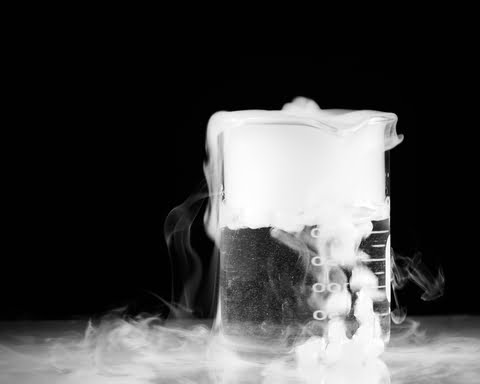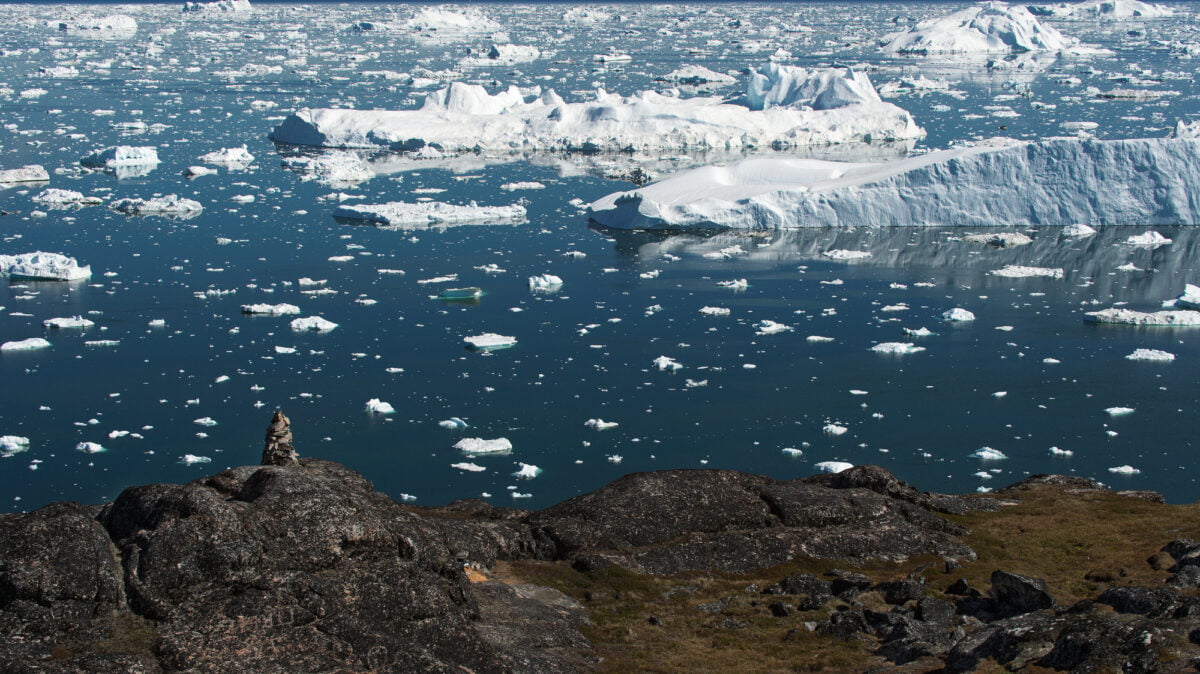Why are our oceans turning acidic?
See why our oceans are turning acidic due to climate change.
This is an experiment which is hard to do at home and is best suited to laboratory conditions, where appropriate safety measures can be put in place. If you do not have the correct setting and equipment, we have produced a video of the experiment which you can find below.
Equipment
◊ 2l graduated cylinder
◊ 2ml potassium hydroxide (1M) or sodium hydroxide (1M)
◊ 1l water
◊ 25ml universal indicator
◊ ~10g dry ice
Method
- Pour the water into the cylinder.
- Add the potassium hydroxide(KOH) or sodium hydroxide. (NaOH) to the cylinder to make a dilute base.
- Add 25ml of universal indicator to the cylinder. You should see the liquid turn blue/purple to reflect the basic pH. You will need to give the solution a stir.
- Now gently add the dry ice into the cylinder. You should see gas bubbles rising through the solution, vapour at the top and the solution change colour to an orange/red colour.

So, what is happening here?
Dry ice is solid CO2.
As the dry ice is dropped in the liquid, it sublimates, going from a solid directly to a gas. This gas bubbles through the liquid, and the vapours you can see at the top.
The CO2 reacts with the water in the solution producing hydrogen, H+, ions.
CO2 (g) + H20(l) → H2CO3 (aq) + 2H+(aq) + CO3 (aq)
The H+ ions produced, react with the hydroxide, OH–, ions in the base, producing water and acting to neutralise the solution.
H+(aq) + OH–(aq) → H2O(l)
However the universal indicator in solution ends up yellow, indicating the solution is a weak acid. This is because eventually there are no OH– ions left, and instead unreacted H+ remain in the solution, turning it acidic.
Optional extra: while the dry ice is still bubbling, you can add more potassium hydroxide or sodium hydroxide to the top of the cylinder, one pipette-full at a time. You should see the liquid temporarily returning to its purple colour, but then changing to yellow again as the carbon dioxide bubbles through.
So how does this relate to climate change?
People are rapidly releasing carbon dioxide, CO2, into the atmosphere, mainly through the burning of fossil fuels. This carbon dioxide has and continues to dissolve into the oceans of the world. Approximately 30% of the CO2 released by people since the Industrial Revolution has dissolved into the oceans (IPCC AR6).
The dissolved CO2 produces H+ ions which, as you’ve seen in the experiment, leads to the acidification of the ocean.
The average pH of the oceans has already changed from 8.2 to around 8.1.
The decrease in ocean pH may be having an effect on the distribution and abundance of marine organisms and ecosystems. For example, organisms with shells or skeletons made from calcium carbonate such as oysters, lobsters and shrimp, are seeing a thinning of their shells as they start to dissolve in the more acidic water. The term ‘osteoporosis of the sea’ has been used to describe this impact.
In addition to this, the ability of water to dissolve CO2 decreases with temperature, meaning that global warming is expected to reduce the oceans’ ability to absorb CO2 from the atmosphere. Higher concentrations of CO2 results in higher atmospheric temperatures. Some of this heat is then absorbed by the ocean, increasing ocean temperatures and in turn reducing its ability to dissolve CO2, and so this loop goes on. This is an example of a positive feedback loop.

Watch this experiment from the chemistry labs at Imperial
Special thank you to Imperial, Dr Simon Foster and Dr Adam Davis for help with producing this video.
Where can I find more information?
Take a look at the other ocean acidifcation resources on MetLink:

